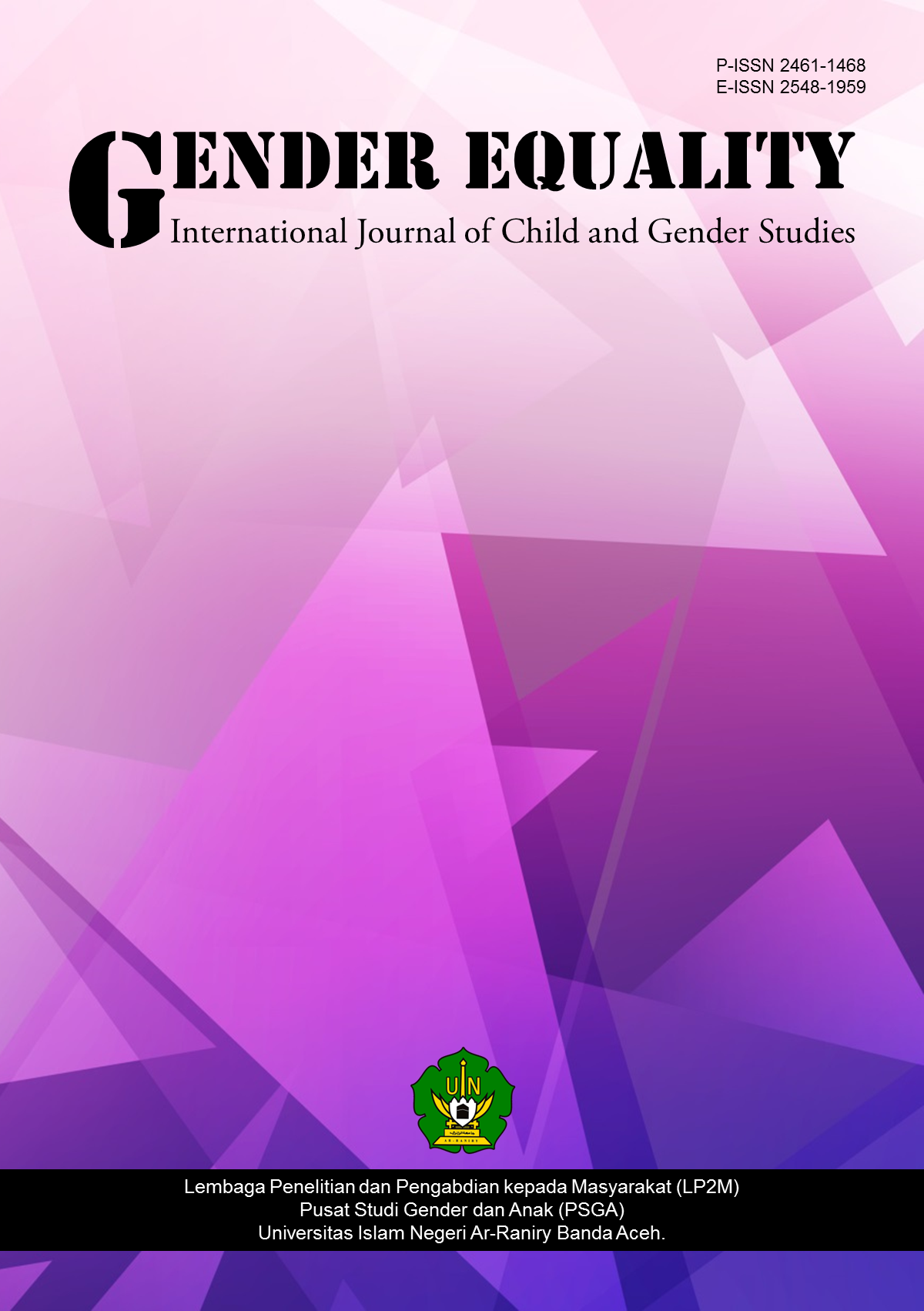HIJAB: KONSEP GENDER SPACE DALAM ARSITEKTUR VERNAKULAR ACEH
DOI:
https://doi.org/10.22373/equality.v6i1.6597Keywords:
Gender Space, Vernacular Architecture, Islamic Values, Rumoh AcehAbstract
Rumoh Aceh is part of vernacular architecture in Aceh which the society is believed has strong bound to Islamic belief. This study aims to investigate the relationship between Islam and space pattern production in Rumoh Aceh, especially in gender space production. The result shows that hijab concept is the concept that is used in gender space production based on Islamic values refers to Islamic sources.
References
Al-Quranul Karim.
Bourdieu, P. (1999). Outline of a theory of practice. Cambridge: Cambridge University Press.
Eddy, F. (2008). Peranan gender dalam arsitektur studi kasus: Arsitektur karo. (Master Thesis, Universitas Sumatera Utara, 2008). Retrieved from http://repository.usu.ac.id/handle/123456789/4366
Foucault, M. (1977). Discipline and punish: The birth of the prison. (A. Sheridan, trans). New York: Pantheon.
Kent, S. (1990). Domestic architecture and the use of space: an interdisciplinary cross-cultural study. Cambridge: Cambridge University Press.
Kuhlmann, D. (2013). Gender studies in architecture: Space, power and difference. Oxon: Routledge.
Mentayani,I & Ikaputra. (2012). Menggali makna arsitektur vernakular: Ranah, unsur, dan aspek-aspek vernakularitas. Lanting Journal of Architecture, 1, 68-82.
Rapoport, A. (1969). House form and culture. New Jersey: Prentice-Hall.
Stanek, L. (2011). Henry Lefebvre on Space: Architecture, Urban Research and The Production of Theory. Minnesota: University of Minnesota Press.
Suhra, S. (2013). Kesetaraan gender dalam perspektif Al-Qur’an dan implikasinya terhadap hukum Islam. Jurnal Al-Ulum, 13, No.2, 373-394.
Wasilah, Prijotomo, J. & Rachmawaty, M. (2012). The role of women in islamic architecture in Conference Proceedings Annual International Conference on Islamic Studies (AICIS XII) Surabaya, 5-8 November 2012 (pp. 3284-3306).
Weresch, K. (2015). Architecture civilization gender. Zurich: Lit Verlag.
Downloads
Published
Issue
Section
License
GENDER EQUALITY: International Journal of Child and Gender Studies allows the author(s) to hold the copyright and to retain the publishing rights without restrictions. Authors who publish with this journal agree to the following terms:
- Authors retain copyright and grant the journal right of first publication with the work simultaneously licensed under a Creative Commons Attribution License that allows others to share the work with an acknowledgment of the work's authorship and initial publication in this journal.
- Authors are able to enter into separate, additional contractual arrangements for the non-exclusive distribution of the journal's published version of the work (e.g., post it to an institutional repository or publish it in a book), with an acknowledgment of its initial publication in this journal.
- Authors are permitted and encouraged to post their work online (e.g., in institutional repositories or on their website) prior to and during the submission process, as it can lead to productive exchanges, as well as earlier and greater citation of published work.


